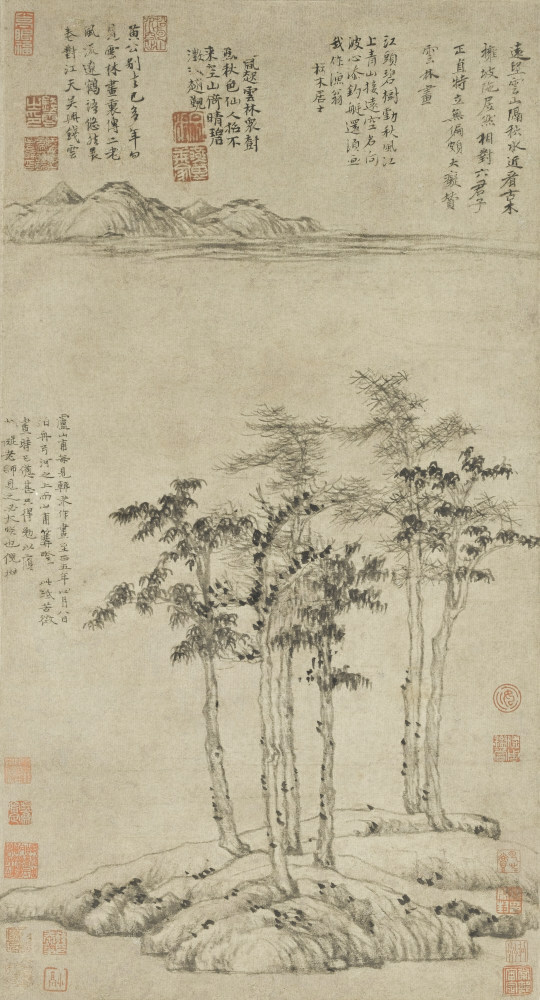
Hong Kong had the King of Kowloon, eccentric graffiti artist. Yuan dynasty China had Ni Zan, king of Lake Tai and equally eccentric minimalist painter
- Tsang Tsou-choi, who graffitied all over Kowloon – some of his work is in the M+ museum – was an odd character. Ni Zan in ancient China was that and more
- The minimalist landscape artist famous for his Lake Tai paintings had a mania for cleanliness, and defecated from a high tower into a bucket full of goose down
It was widely reported that Tsang was somewhat eccentric; he might even have lived with mental health issues for most of his life. He died in a nursing home in 2007 at the age of 86.

First of all, his art. Ni Zan, one of the Four Yuan Masters, was famous for his minimalist landscapes painted in the pingyuan (“level distance”) style, which typically shows an expansive vista, often of mountains and bodies of water. Ni’s landscapes are often devoid of people and human activity, imparting his works with a meditative or even melancholic quality.
He was particularly noted for his depictions of Lake Tai, on whose banks are the cities of Suzhou and Wuxi. The latter’s Yunlin Neighbourhood, where Ni was born, is named after the pseudonym he used as an artist.

Ni was also known for his eccentricities. According to the writings of his contemporaries, he required that ablution implements be always near at hand wherever he went. At home, he would repeatedly wash his hair several times at one go. When getting dressed, he would pat himself down and flick away imaginary dust over and over again.
Once, he had a guest who stayed the night. He began obsessing over the possibility that his guest would soil his house by spitting. After the guest left, he ordered his servants to search the house for evidence of his guest’s filthy habit. Knowing that Ni would never rest until something was found, one of his servants pointed to a random leaf on the ground and said the guest had spat on it.
Ni put a hand over his nose, closed his eyes, and ordered the servant to pick the offending leaf up and dispose of it 3 li (about 1.5km) away.

There was also a scatological dimension to his eccentric behaviour. His servant would carry home two buckets of water on a shoulder pole every day. Ni only brewed his tea with the water in the bucket that was suspended in front of the servant because he was concerned that the servant would break wind and defile the water in the bucket suspended behind him.
His toilet at home was a specially constructed high tower. Whatever fell through would drop a considerable height and disappear into a bucket filled with goose down. His servants replaced the bucket of feathers very regularly.
Despite his obsessive-compulsive behaviour and eccentricities, Ni Zan was lucky to have been born to a wealthy family. For most of his life, he had the means to support his artistic pursuits, which included writing and calligraphy. The King of Kowloon wasn’t so lucky in life, but his art lives on, ensuring him a place in Hong Kong’s collective memory.











